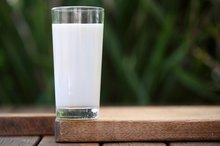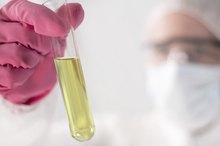What does fact checked mean?
At Healthfully, we strive to deliver objective content that is accurate and up-to-date. Our team periodically reviews articles in order to ensure content quality. The sources cited below consist of evidence from peer-reviewed journals, prominent medical organizations, academic associations, and government data.
- Linus Pauling Institute; Phosphorus; Jane Higdon and Victoria Drake; August 2007
- MayoClinic.com; Low-Phosphorus Diet: Best for Kidney Disease?; Erik P. Castle, M.D.; August 2007
The information contained on this site is for informational purposes only, and should not be used as a substitute for the advice of a professional health care provider. Please check with the appropriate physician regarding health questions and concerns. Although we strive to deliver accurate and up-to-date information, no guarantee to that effect is made.
Why Is Phosphoric Acid Added to Soft Drinks?
Read the list of ingredients on your can of cola and you'll find phosphoric acid among them. Manufacturers add phosphoric acid to soft drinks as an acidifying agent. This substance appears in a variety of soft drinks, usually dark colas, giving them a tangy flavor. Phosphoric acid tends to stir up controversy, since it can have adverse effects on your health.
What Is Phosphoric Acid?
Phosphoric acid is a type of phosphorous commonly used as a food additive to enhance flavor or preserve freshness. Phosphorous, a mineral, originates from soil and water, but undergoes chemical processing to become a more stable element known as phosphoric acid. You need some phosphorous in your diet to support bone structure, produce and store energy, transmit genetic information and regulate your pH balance throughout your body.
How Much Do You Need?
Can Too Much Calcium Carbonate Have Side Effects?
Learn More
You need 700 mg of phosphorous each day to support these basic functions. It is readily available in almost all foods, since all living organisms rely heavily on the mineral. Food additive sources of phosphorous, such as phosphoric acid in soft drinks, are not generally calculated as part of your phosphorous intake. If you drink soft drinks daily, you may consume too much phosphorous in the form of phosphoric acid. As of 2007, the average intake of phosphorous for women was 1,024 mg and for men 1,495 mg, according to the Linus Pauling Institute 1. One 12-ounce can of cola provides approximately 40 mg of phosphorous in the form of phosphoric acid. Ingesting large amounts of this mineral may have adverse effects on your health.
- You need 700 mg of phosphorous each day to support these basic functions.
- Food additive sources of phosphorous, such as phosphoric acid in soft drinks, are not generally calculated as part of your phosphorous intake.
Health Effects
High levels of phosphorous in your blood is referred to as "hyperphosphatemia." Your kidneys work hard to regulate phosphorous in your body and eliminate any excess you consume, including in the form of phosphoric acid from soft drinks. This condition can lead to organ damage, most notably kidney damage. If you already have kidney disease or are at risk for developing it, drinking large amounts of soda containing phosphoric acid may be especially harmful. Having poor kidney function can lead to unusually high levels of phosphorous in your blood that lower calcium levels, increasing your risk of bone disease and brittle bones. Limit your phosphoric intake to 800 to 1,000 mg per day if you have kidney problems, suggests Dr. Erik P. Castle of the Mayo Clinic.
- High levels of phosphorous in your blood is referred to as "hyperphosphatemia."
- Your kidneys work hard to regulate phosphorous in your body and eliminate any excess you consume, including in the form of phosphoric acid from soft drinks.
Other Options
Calcium and Magnesium in Caltrate: What Does It Do for the Body?
Learn More
Selecting soft drinks other than colas can help reduce your phosphoric acid intake. Clear soft drinks, such as ginger ale, lemon-lime soda or flavored seltzer, offer thirst-quenching flavor without the excess phosphoric acid. Root beer is another selection that doesn't typically contain phosphoric acid. Always read the ingredient list to ensure your soft drink selection is free of phosphoric acid, if you have a concern about your intake.
- Selecting soft drinks other than colas can help reduce your phosphoric acid intake.
Related Articles
References
Writer Bio
Melodie Anne Coffman specializes in overall wellness, with particular interests in women's health and personal defense. She holds a master's degree in food science and human nutrition and is a certified instructor through the NRA. Coffman is pursuing her personal trainer certification in 2015.









